PAIR Apistogramma Agassizii «Double Red» – Double Red Agassiz’S Dwarf Cichlid(2 FISH MALE AND FEMALE ), Stunning Freshwater Fish for Vibrant Aquarium Communities, Easy Care for Beginners
£29.99 Original price was: £29.99.£25.16Current price is: £25.16.
Welcome these beautiful Apistogramma Agassizii «Double Red» to your aquarium! This stunning pair of dwarf cichlids, with one male and one female, showcases vibrant colors and elegant movements. Perfect for peaceful communities, they thrive in well-planted tanks, enhancing your aquatic environment.
997 in stock
Species Introduction
Welcome these beautiful creatures, the Apistogramma Agassizii, commonly known as the Double Red Agassiz’s Dwarf Cichlid. This captivating freshwater fish enchants aquarists with its vibrant colors and engaging behavior. Native to the slow-moving waters of the Amazon Basin in South America, this species thrives in soft, acidic waters, making it a perfect addition to a well-planted aquarium. The Double Red Agassizii is particularly known for the striking contrast of its bright red and orange hues against a backdrop of deep blue and yellow, making it one of the most beautiful freshwater fish available. These fish are generally peaceful and can coexist with a variety of tank mates, provided the environment is suitable and they are not kept with overly aggressive species.
Essential Care Guide for Your Pair Apistogramma Agassizii «Double Red»
| Optimal Living Conditions | |
|---|---|
| Water Temperature | 24-27°C (75-81°F) |
| pH Level | 6.5-7.5 |
| Water Hardness | 4-12 dKH |
| Minimum Tank Size | 80L (20 gal) |
| Salinity | Freshwater |
| Care Level | Beginner Friendly |
Positive Information
Care level: Moderate
Care Requirements Dashboard
Caring for the Double Red Agassizii requires a commitment to maintaining optimal tank conditions that mimic their natural habitat. A minimum tank size of 20 gallons is recommended to provide ample swimming space and hiding spots. The ideal water parameters include a pH of 6.0 to 7.5, a temperature range of 75°F to 82°F, and a hardness of 5 to 15 dGH. It is essential to maintain stable water conditions, as fluctuations can stress these sensitive fish. Regular water changes of 25% every two weeks will help keep the water quality high, ensuring a healthy environment for your aquatic companions.
Important Notice
Ensure that the tank is well-cycled before introducing these fish to avoid harmful spikes in ammonia and nitrite levels.
Natural Behavior & Temperament
The Double Red Agassizii exhibits fascinating behaviors that make them a joy to observe. They are known for their territorial nature, especially during breeding periods. Males can display vibrant colors and engage in elaborate courtship rituals to attract females. In a community tank, it is crucial to provide plenty of hiding spots and territories, such as caves and dense plants, to reduce stress and aggression. These fish are generally peaceful but can become assertive when defending their space. They thrive in small groups, and keeping a male-female pair is recommended for optimal social dynamics. Observing their interactions can provide insights into their complex social structures and behaviors.
Tank Setup Guide
Creating an ideal environment for the Double Red Agassizii involves careful consideration of tank setup. A well-planted aquarium with soft substrate, such as sand or fine gravel, mimics their natural habitat and allows them to forage naturally. Incorporate driftwood, rocks, and dense vegetation to provide hiding spots and territories. Floating plants can also help diffuse light and create a more natural ambiance. Ensure that the tank has a gentle filtration system to maintain water quality without creating strong currents, as these fish prefer calm waters. Regularly rearranging decorations can stimulate their curiosity and encourage natural behaviors.
Water Quality Management
Maintaining water quality is paramount for the health and well-being of your Double Red Agassizii. Regular testing of water parameters will help ensure that the pH, temperature, and hardness remain within the ideal ranges. Invest in a reliable water testing kit to monitor ammonia, nitrite, and nitrate levels. A pH between 6.0 and 7.5 is optimal, along with a temperature range of 75°F to 82°F. Regular water changes of 25% every two weeks will help dilute harmful substances and replenish essential minerals. Additionally, using a high-quality water conditioner can remove chlorine and chloramines, providing a safe environment for your fish.
Feeding & Nutrition
A well-balanced diet is essential for the health of your Double Red Agassizii. These fish are omnivorous and thrive on a varied diet that includes high-quality pellets, flakes, and frozen or live foods such as brine shrimp, daphnia, and bloodworms. Feeding them twice a day in small portions will help prevent overfeeding and maintain water quality. It is important to observe their feeding behavior to ensure that all fish are receiving adequate nutrition. Additionally, incorporating vegetable matter, such as spirulina or blanched vegetables, can enhance their diet and promote overall health.
Compatibility Guide
The Double Red Agassizii is known for its peaceful demeanor, making it suitable for community tanks with other compatible species. However, it is essential to avoid aggressive or overly large fish that may intimidate or harm them. Ideal tank mates include small to medium-sized peaceful fish such as tetras, rasboras, and other dwarf cichlids. It is advisable to introduce new tank mates gradually and monitor their interactions closely. Creating a well-planted environment with plenty of hiding spots will help reduce stress and aggression among tank inhabitants.
Health & Wellness
Ensuring the health and wellness of your Double Red Agassizii involves regular monitoring and preventive care. Common health issues include stress-related diseases, fin rot, and ich. Signs of illness may include lethargy, loss of appetite, or abnormal swimming patterns. Maintaining stable water parameters and providing a nutritious diet are crucial for preventing health issues. Quarantining new fish before introducing them to the main tank can also help prevent the spread of diseases. Regularly observing your fish for any changes in behavior or appearance will allow for early detection and treatment of potential health problems.
Breeding Information
Breeding the Double Red Agassizii can be a rewarding experience for aquarists. Males and females can be distinguished by their coloration, with males exhibiting more vibrant colors and longer fins. To encourage breeding, provide a separate breeding tank with suitable hiding spots and a gentle filtration system. The female will lay eggs on flat surfaces, such as rocks or leaves, and both parents will guard the eggs until they hatch. After hatching, the fry will require infusoria or finely crushed flakes for the first few weeks. As they grow, gradually introduce larger foods to support their development. Monitoring the fry closely and maintaining optimal water conditions will ensure their successful growth.
Acclimation Process
Acclimating your Double Red Agassizii to their new environment is crucial for their health and well-being. Begin by floating the sealed bag in the aquarium for about 15-20 minutes to equalize the temperature. After this, gradually introduce small amounts of aquarium water into the bag every 5-10 minutes for about an hour. This process helps the fish adjust to the new water parameters. Once acclimated, gently release the fish into the tank without adding the bag water. Avoiding sudden changes in water conditions will help reduce stress and promote a smooth transition for your new aquatic companions.
Long-term Care
Long-term care of the Double Red Agassizii involves regular maintenance and monitoring of their environment. These fish can live for several years with proper care, so it is essential to commit to their well-being. Regular water testing and changes, along with a balanced diet, will help maintain their health. As they mature, observe their behavior and interactions with other tank mates, making adjustments as necessary to ensure a harmonious community. Providing a stable environment with consistent water parameters will contribute to their longevity and overall happiness.
Natural Habitat Recreation
Recreating the natural habitat of the Double Red Agassizii can enhance their well-being and encourage natural behaviors. In their native environment, they inhabit slow-moving waters with plenty of vegetation and hiding spots. To mimic this, create a biotope aquarium with soft substrate, driftwood, and live plants. Incorporate floating plants to provide shade and cover, and ensure that the tank has areas of varying light and darkness. This setup not only provides a comfortable environment for your fish but also enhances the aesthetic appeal of your aquarium.
Seasonal Care Adjustments
Seasonal changes can impact the care requirements of your Double Red Agassizii. During warmer months, ensure that the tank temperature remains stable, as fluctuations can stress these fish. Consider using a heater during colder months to maintain the ideal temperature range. Additionally, monitor water parameters more frequently during seasonal transitions, as changes in temperature and humidity can affect water quality. Adjusting feeding schedules and maintaining a consistent routine will help your fish feel secure and comfortable year-round.
Expert Tips
For those looking to provide the best care for their Double Red Agassizii, consider these expert tips. Regularly observe your fish to understand their behavior and preferences, as this will help you create a more suitable environment. Providing a varied diet will not only enhance their health but also bring out their vibrant colors. Additionally, consider keeping a breeding pair to witness the fascinating process of reproduction. Lastly, engage with online communities or local fish clubs to gather insights and share experiences with other aquarists.
Troubleshooting
Should you encounter any issues with your Double Red Agassizii, it is vital to address them promptly. Common problems include stress from aggressive tank mates, poor water quality, and inadequate hiding spots. If your fish exhibit signs of stress, such as hiding excessively or displaying aggressive behavior, assess the tank setup and make necessary adjustments. Regular water testing will help identify any issues with water parameters. If illness arises, consider isolating affected fish in a quarantine tank for treatment. Early intervention is key to maintaining a healthy aquarium.
Scientific Background
The Apistogramma Agassizii belongs to the family Cichlidae, which includes many popular aquarium species. This species was first described by the renowned ichthyologist Jean Agassiz in the 19th century. Research on this species has revealed fascinating insights into their behavior, breeding habits, and environmental needs. Conservation efforts are crucial to protecting their natural habitats, as deforestation and pollution threaten their populations in the wild. Understanding the scientific background of the Double Red Agassizii can enhance the appreciation of these beautiful fish and the importance of responsible aquarium practices.
Advanced Care Techniques
For experienced aquarists looking to elevate their care for the Double Red Agassizii, consider implementing advanced techniques. Utilizing a planted tank with a CO2 injection system can enhance plant growth and create a more stable environment. Additionally, experimenting with different food types, such as live or frozen foods, can stimulate natural foraging behaviors. Monitoring breeding behaviors and documenting the process can provide valuable insights into their reproductive habits. Engaging in regular discussions with fellow aquarists and staying updated on the latest research can further enrich your experience with these captivating fish.
Water Quality Parameters
Optimal Range
24-27°C
6.5-7.5
0 ppm
Caution Zone
22-24°C or 27-29°C
6.0-6.5 or 7.5-8.0
0.25-0.5 ppm
Danger Zone
<22°C or >29°C
<6.0 or >8.0
>0.5 ppm
Monitoring Tip: Test water parameters weekly and perform regular water changes to maintain optimal conditions for your aquatic friends!
Frequently Asked Questions
Q: What tank size is required for Apistogramma Agassizii «Double Red»?
For Apistogramma Agassizii «Double Red», a minimum tank size of 60 litres is recommended. This provides ample space for swimming, hiding, and establishing territories. Since these cichlids can be territorial, especially during breeding, offering adequate space helps to minimise aggression. A well-planted tank with caves and hiding spots will create a more natural environment, reducing stress and promoting healthy behaviour. Aim for a tank that is at least 75 cm long to accommodate their swimming needs and allow for territorial boundaries.
✓ Expert Tip
Consider using a sandy substrate and adding live plants to mimic their natural habitat, which can enhance their colours and behaviour.
Q: What water parameters do Apistogramma Agassizii require?
Apistogramma Agassizii thrive in slightly acidic to neutral water, with a pH range of 6.0 to 7.5 being ideal. The temperature should be maintained between 24°C and 28°C, with stability being crucial for their health. Regular water changes of 10-15% weekly will help maintain optimal water quality. Conduct regular tests for ammonia, nitrites, and nitrates, ensuring levels are safe for your aquatic companions. Soft, slightly acidic water closely resembles their natural habitat, promoting their wellbeing and colouration.
✓ Expert Tip
Using RO (reverse osmosis) water can help achieve the desired parameters if your tap water is unsuitable.
Q: How often should I feed Apistogramma Agassizii?
Feed Apistogramma Agassizii a varied diet consisting of high-quality pellets, frozen or live foods such as brine shrimp and daphnia. It is recommended to feed them 2-3 times a day, offering only what they can consume in a few minutes to prevent overfeeding. A varied diet not only supports their health but also enhances their colouration and behaviour. Avoid feeding them too much at once, as uneaten food can lead to poor water quality.
✓ Expert Tip
Incorporating vegetable matter, such as blanched spinach, can provide essential nutrients and aid in digestion.
Q: What are the best tank mates for Apistogramma Agassizii?
When selecting tank mates for Apistogramma Agassizii, opt for peaceful species that occupy different water levels. Suitable companions include small tetras, rasboras, and Corydoras catfish. Avoid aggressive or large fish that may intimidate or outcompete them for food. Providing plenty of hiding spots will also help establish territories and reduce stress among tank mates. Always observe interactions closely, especially during breeding times, as behaviour can change.
✓ Expert Tip
Introduce new fish slowly and monitor their interactions to ensure compatibility within the community tank.
Q: How do I properly acclimatise Apistogramma Agassizii to my aquarium?
Acclimatising Apistogramma Agassizii is crucial to ensure their health and reduce stress. Begin by floating the sealed bag in the aquarium for about 15-20 minutes to equalise the temperature. Next, gradually introduce small amounts of aquarium water into the bag every 10 minutes for around an hour. This process helps the fish adjust to the water parameters gradually. After acclimatisation, gently net the fish into the tank, avoiding adding bag water to your aquarium.
✓ Expert Tip
Turn off filtration temporarily during acclimatisation to prevent stress from water flow.
Q: What are the signs of healthy Apistogramma Agassizii?
Healthy Apistogramma Agassizii display vibrant colours, active swimming behaviour, and an inquisitive nature. Their fins should be fully extended without any signs of fraying or clamping. Look for clear eyes and a responsive attitude towards their environment. Regular feeding and a healthy appetite are also good indicators of wellbeing. Any changes in behaviour, such as lethargy or hiding excessively, may indicate stress or health issues that require closer observation.
✓ Expert Tip
Keep a consistent routine with feeding and water changes to help maintain their health.
Q: How do I successfully breed Apistogramma Agassizii?
Breeding Apistogramma Agassizii requires optimal conditions, including a separate breeding tank with soft, slightly acidic water. Provide flat surfaces for spawning, such as slate or broad leaves. A temperature around 26°C is ideal for breeding. The female will lay eggs, which the male will guard. It is crucial to provide plenty of hiding spots for the fry once they hatch. After a few days, the fry will become free-swimming, at which point you can start feeding them infusoria or finely crushed flakes.
✓ Expert Tip
Isolate the breeding pair in a peaceful environment to increase the likelihood of successful spawning.
Q: What temperature should I maintain for Apistogramma Agassizii?
Maintaining a stable temperature between 24°C and 28°C is essential for the wellbeing of Apistogramma Agassizii. Sudden temperature fluctuations can cause stress and health issues. Use a reliable aquarium heater with a thermometer to monitor the temperature accurately. Regular checks will ensure that the tank remains within the desired range, promoting a healthy environment for your aquatic companions. It is particularly important to maintain consistent temperatures during breeding periods to encourage spawning.
✓ Expert Tip
Utilising a heater with a built-in thermostat can help maintain temperature stability.
Q: How long do Apistogramma Agassizii typically live in captivity?
In captivity, Apistogramma Agassizii can live for approximately 5 to 8 years with proper care. Factors such as water quality, diet, and tank conditions play a significant role in their lifespan. Regular maintenance, including water changes and appropriate feeding, will help ensure a long, healthy life for your fish friends. Monitoring their health and addressing any issues promptly can also contribute to their longevity.
✓ Expert Tip
Keeping a stable environment and providing a varied diet will help maximise their lifespan.
Q: What type of substrate is most suitable for Apistogramma Agassizii?
A sandy substrate is highly recommended for Apistogramma Agassizii, as it mimics their natural habitat and allows them to exhibit natural digging behaviours. Fine sand is preferable as it prevents injury to their delicate fins and skin. Additionally, a sandy substrate helps maintain water quality by allowing beneficial bacteria to thrive, aiding in the biological filtration process. Incorporate some smooth stones and driftwood to create hiding spots and territories within the tank.
✓ Expert Tip
Avoid using sharp substrates that could harm your fish, as their safety should always be a priority.
Q: What behavioural patterns should I expect from Apistogramma Agassizii?
Apistogramma Agassizii exhibit interesting behaviours, particularly territoriality, especially during breeding periods. Males may display vibrant colours and engage in elaborate courtship rituals. They are generally peaceful but can become aggressive when defending their territory or fry. These cichlids enjoy exploring their environment, often hiding amongst plants and decorations. Providing ample hiding spots will encourage natural behaviours and reduce stress. Observing their interactions can be quite rewarding, as they exhibit a range of social behaviours.
✓ Expert Tip
Allow them to establish territories and avoid overcrowding to minimise aggression.
Q: How can I prevent common diseases in Apistogramma Agassizii?
Preventing diseases in Apistogramma Agassizii begins with maintaining excellent water quality through regular testing and water changes. Ensure the tank is cycled properly before introducing new fish. Quarantine any new arrivals for at least two weeks to prevent introducing pathogens. A varied diet will also enhance their immune systems. Observe your fish regularly for any signs of illness, such as changes in behaviour, eating habits, or appearance. Prompt action at the first sign of trouble can often prevent more serious health issues.
✓ Expert Tip
Invest in a good quality water conditioner to remove harmful substances from tap water.
Q: What lighting conditions do Apistogramma Agassizii prefer?
Apistogramma Agassizii thrive in low to moderate lighting conditions, which mimic their natural habitat in shaded river environments. Use subdued lighting to create a comfortable environment, as overly bright lights can stress them. You can achieve this by using floating plants or tall plants to diffuse the light. A light cycle of 10-12 hours per day is generally suitable, helping to maintain a healthy day-night rhythm for your fish friends.
✓ Expert Tip
Consider using a timer for consistent lighting schedules, which can help reduce stress.
Q: How do I recognise stress in Apistogramma Agassizii?
Signs of stress in Apistogramma Agassizii include hiding excessively, clamped fins, lethargy, and a lack of appetite. Additionally, they may exhibit rapid gill movement or erratic swimming behaviour. Changes in colouration, such as fading or darkening, can also indicate stress. It is essential to identify the cause of stress, which may include poor water quality, unsuitable tank mates, or abrupt changes in their environment. Addressing the underlying issues promptly can help restore their wellbeing.
✓ Expert Tip
Regular monitoring and maintaining stable conditions can significantly reduce stress levels in your fish.
Q: What natural habitat conditions should I replicate for Apistogramma Agassizii?
To replicate the natural habitat of Apistogramma Agassizii, focus on creating a soft, sandy substrate with plenty of hiding spots using driftwood and rocks. Incorporate live plants to provide cover and mimic their natural environment, which includes slow-moving waters in South America. Maintaining slightly acidic water with a temperature range of 24°C to 28°C is essential. Additionally, consider using dim lighting and keeping the tank well-planted to create a comfortable and secure environment for these beautiful fish.
✓ Expert Tip
Using natural materials will create a more enriching environment and promote natural behaviours.


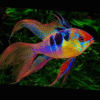
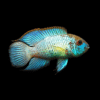
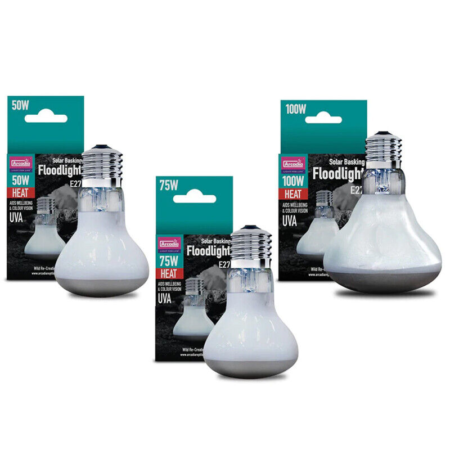






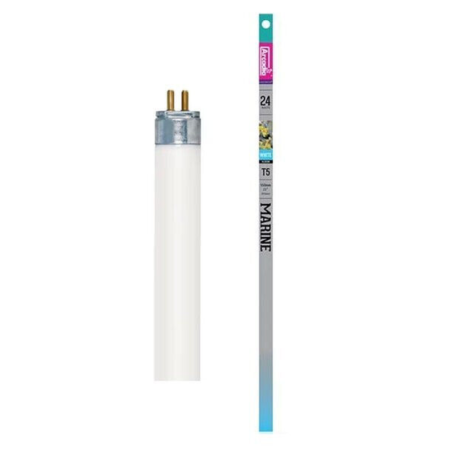
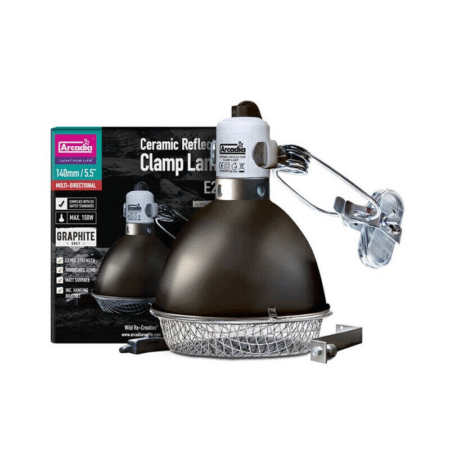
Emily Carter (verified owner) –
As a passionate aquarium enthusiast, I couldn’t be happier with my pair of Apistogramma Agassizii «Double Red». These beautiful dwarf cichlids have been a stunning addition to my 30-gallon tank. After just a week of them settling in, the male has already started showing off his vibrant colors, flaunting those rich red fins that truly stand out against the aquascape.
The female is just as lovely, and I’ve noticed her exploring the hiding spots I created with plants and driftwood. It’s heartwarming to see how they interact; they seem to have formed a close bond! These cichlids are known to be a bit shy, and I’ve taken care to keep the tank calm, which I think has helped them adapt quickly.
Compared to other cichlids I’ve kept, the Agassizii are much more personable and curious, making them a joy to watch. I also appreciate how they’re relatively peaceful towards other species, as long as they have places to retreat when needed. My only minor concern is that they can be a bit temperamental during breeding, so I’ll need to keep an eye on that as they mature. If you’re a fellow aquarist looking for beautiful, engaging freshwater fish, I highly recommend investing in this pair. They’ve brought so much life to my tank, and I can’t wait to see how they thrive!
Emily Carter (verified owner) –
I recently purchased a pair of Apistogramma Agassizii «Double Red» and I couldn’t be happier with my choice! These dwarf cichlids are such vibrant additions to my community tank. After about two months of observation, I have noticed their colors becoming even more pronounced, especially when they’re displaying their dominance or during feeding time. It’s pure joy to watch them interact!
I initially considered bringing home different types of freshwater fish, but the Agassizii stood out because of their unique coloring and personality. They are so much more engaging than my previous fish!
One thing to note is that they do need a bit of cover in the tank—plants and caves are a must for them to feel secure. I quickly added some driftwood and floating plants, and it has made a huge difference.
I’d recommend this pair for any intermediate aquarist looking to add personality to their aquarium. They bring life and color that truly enhances the beauty of the setup. My experience ordering was smooth—arrived healthy and well-packaged. I’d definitely buy from here again!